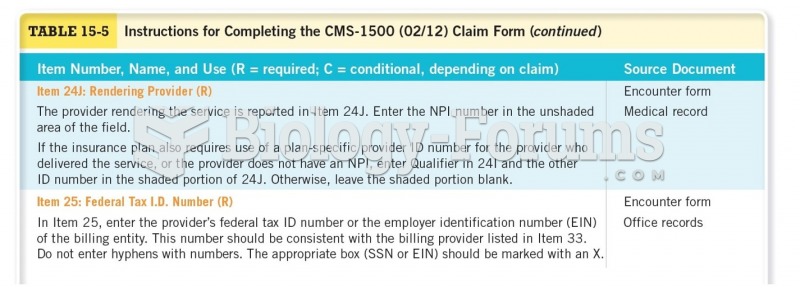Answer to Question 1
Correct Answer: 3
Rationale 1: Lipid-lowering drugs should be taken in the evening to take advantage of the diurnal pattern of greater cholesterol synthesis by the liver at night.
Rationale 2: Cholestyramine should be taken at least 4 hours before or 1 hour after other medications.
Rationale 3: An adequate fluid intake is necessary to prevent constipation in clients taking cholestyramine.
Rationale 4: Cholestyramine does not affect fluid balance by any mechanism.
Global Rationale: An adequate fluid intake is necessary to prevent constipation in clients taking cholestyramine. Lipid-lowering drugs should be taken in the evening to take advantage of the diurnal pattern of greater cholesterol synthesis by the liver at night. Cholestyramine should be taken at least 4 hours before or 1 hour after other medications. Cholestyramine does not affect fluid balance by any mechanism.
Answer to Question 2
Correct Answer: 1,2,3
Rationale 1: A lowered total cholesterol level is an expected therapeutic effect to receiving drug therapy for lipid disorders.
Rationale 2: A lowered LDL cholesterol level is an expected therapeutic effect to receiving drug therapy for lipid disorders.
Rationale 3: An increase in HDL cholesterol level is an expected therapeutic effect to receiving drug therapy for lipid disorders.
Rationale 4: Elevated liver enzymes is an adverse effect, not an expected therapeutic effect, to receiving drug therapy for lipid disorders.
Rationale 5: A decreased BUN and creatinine is not an expected therapeutic effect to receiving drug therapy for lipid disorders.
Global Rationale: A lowered total cholesterol level, a lowered LDL, and an increased HDL are expected therapeutic effects to receiving drug therapy for lipid disorders. Elevated liver enzymes is an adverse effect, not an expected therapeutic effect, to receiving drug therapy for lipid disorders. A decreased BUN and creatinine is not an expected therapeutic effect to receiving drug therapy for lipid disorders.







